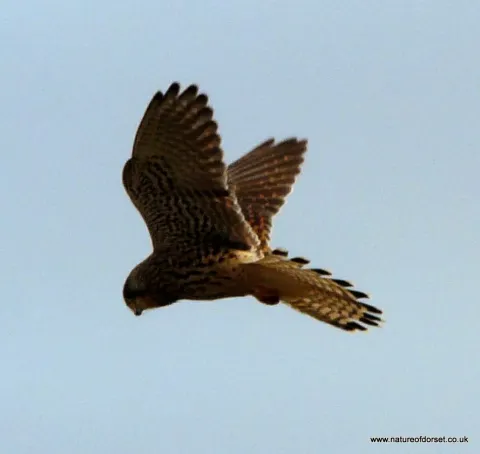In Depth
| Kestrel |
|---|
Title: Kestrel: The Elegant Hunter of Open SkiesWith keen eyesight and remarkable agility, the Kestrel (Falco tinnunculus) reigns as a master of the open skies. This captivating bird of prey, known for its graceful flight and striking appearance, holds a special place in the hearts of birdwatchers and nature enthusiasts worldwide. Join us as we soar into the fascinating world of the Kestrel, uncovering its characteristics, behaviors, and ecological significance. Appearance and Characteristics: The Kestrel is a small to medium-sized falcon, characterized by its slender build, long wings, and distinctive plumage. Adult males typically display a striking combination of rusty brown and grayish-blue feathers on their upperparts, with black spotting and barring. The underparts are pale buff or creamy white, often streaked with fine markings. Females and juveniles have similar coloration but may appear slightly duller and more heavily streaked. Kestrels have a characteristic black "moustache" mark on either side of their face, giving them a distinctive appearance. Habitat and Distribution: Kestrels are highly adaptable birds found in a wide range of habitats, including open countryside, grasslands, heathlands, moorlands, and urban areas. They are distributed across much of Europe, Asia, Africa, and parts of North America. In urban environments, Kestrels can often be seen perching on utility poles, buildings, and roadside signs, hunting for prey in open spaces such as parks and playing fields. Behavior and Hunting: Kestrels are primarily diurnal hunters, meaning they are most active during the day. They hunt by scanning the ground from a perch or while hovering in mid-air, using their keen eyesight to detect the slightest movement of prey below. Kestrels feed on a variety of small mammals, birds, insects, and other prey, including voles, mice, shrews, grasshoppers, and lizards. They are known for their ability to hover in place, using rapid wing beats and subtle adjustments of their tail feathers to maintain balance and stability while scanning for prey. Breeding and Nesting: During the breeding season, which typically begins in spring, Kestrels engage in courtship displays characterized by aerial acrobatics and vocalizations. They nest in a variety of natural and man-made structures, including tree cavities, cliffs, old buildings, and nest boxes. The female lays a clutch of eggs, usually numbering between 3 and 6, and incubates them for around a month until they hatch. Both parents participate in feeding and caring for the young, which fledge and become independent after several weeks. Conservation Status: Overall, the Kestrel is considered to be of least concern in terms of conservation status, as it has a wide distribution and stable population trends in many regions. However, like many birds of prey, Kestrels face threats from habitat loss, pesticide contamination, road traffic accidents, and illegal persecution. Efforts to conserve and protect suitable habitat, provide nesting sites, and reduce human-induced threats are essential for ensuring the continued survival of Kestrels and other birds of prey. Conclusion: With its elegant flight, keen eyesight, and hunting prowess, the Kestrel embodies the spirit of the open skies. Whether soaring high above the countryside or perched on a roadside fence, this captivating bird of prey inspires awe and admiration in all who encounter it. As stewards of the natural world, let us continue to cherish and protect the Kestrel and its habitat, ensuring that future generations can marvel at the beauty and grace of this remarkable raptor. |

